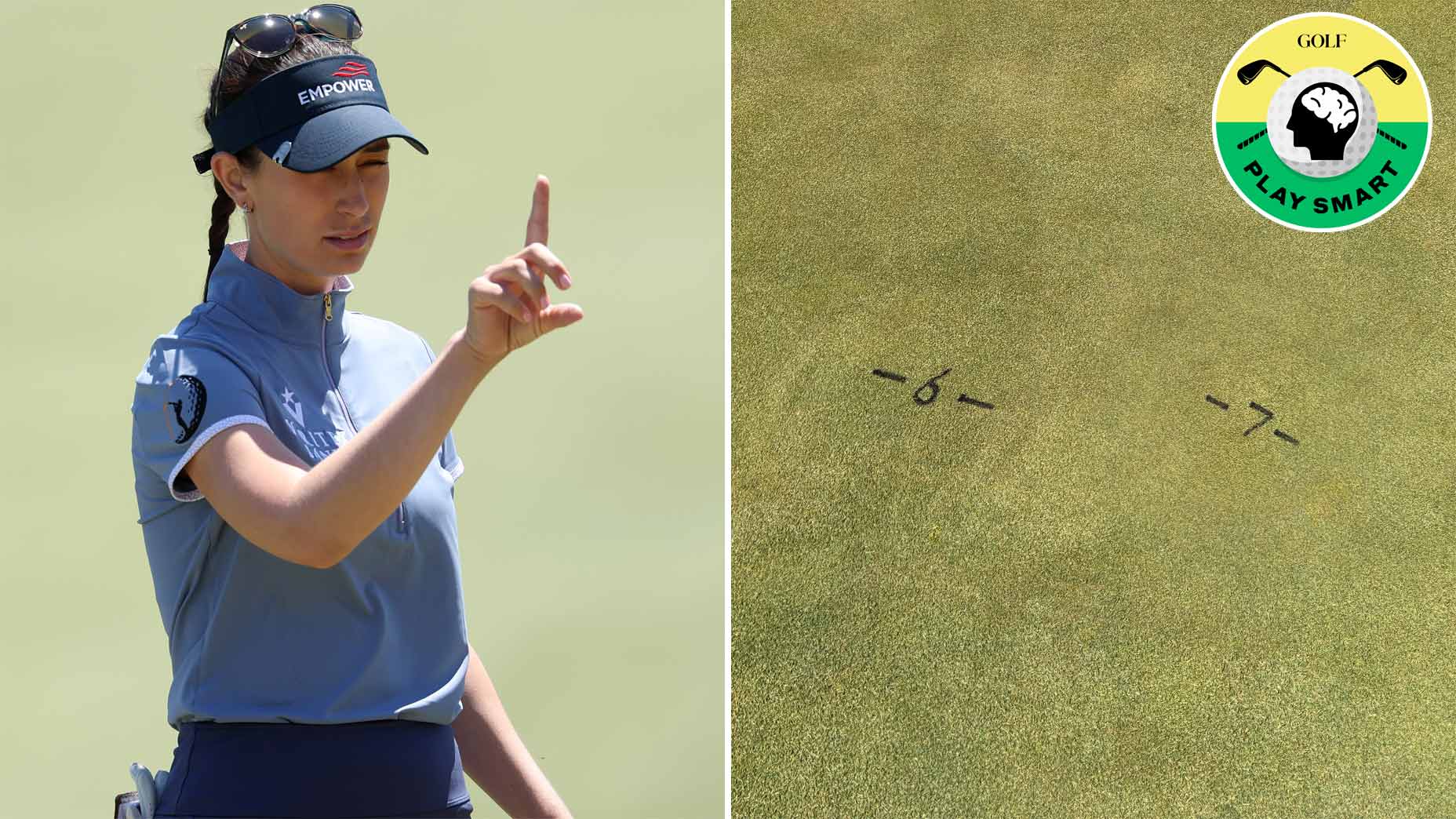Welcome to Play Smart, a regular GOLF.com game-improvement column that will help you play smarter, better golf.
LANCASTER, Pa. — At this weekend’s U.S. Women’s Open, the last thing players will do before embarking on their rounds is roll putts on the practice green. Not only is this part of most players’ routines, it’s also done out of convenience as the green is directly behind the first tee. With the practice green so close, it can be hard to distinguish where the tee box ends and the green begins.
The practice area is massive, and it’s where every player in the field at the 79th U.S. Women’s Open is dialing in their short game before tackling this beastly William Flynn design. The surface perfectly mimics the speed and texture of the greens on the course, with balls thumping on ground when dropped and the baked-out turf crunching under foot.
While hanging out around this practice facility this week, I noticed something interesting. Around the perimeter of the green, there’s a sequence of numbers from 1-7 written on the ground. What do they mean? Check out the video below or read on for more.
If you’ve ever watched a pro golf tournament, you’ve likely seen players use their feet to read the greens. This practice — commonly known as Aim Point — is done by straddling the line of the putt and feeling the direction of the slope with your feet.
But just knowing which direction the putt is breaking is only half the battle. You also must know how much the putt is breaking — and that’s where the mysterious numbers come into play.
When feeling the break with their feet, high-level players will also judge the severity (or grade) of the slope. The grade of the slope starts at zero (a flat putt) and increases numerically as the severity of the slope increases.
To help dial in the proper feels of the Lancaster greens, someone walked around the perimeter of the practice green and measured the grade of various slope with a level, and then wrote the corresponding number on the turf. That way, when practicing on the putting green, players and caddies can feel the grade of different slopes before the round, and know the exact severity of the tilt.
It’s just another way that the best in the world are dialing in their feels as they vie for the U.S. Women’s Open title.
